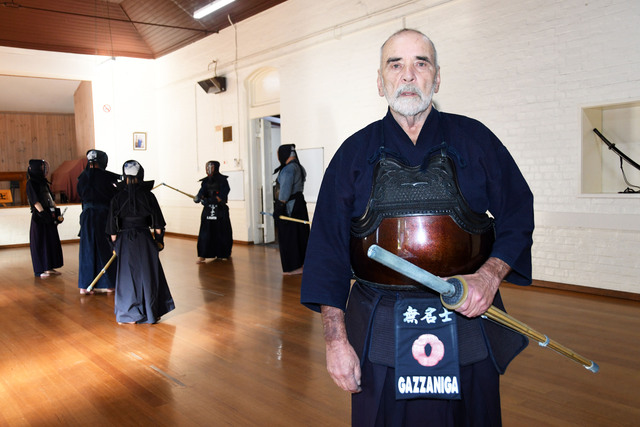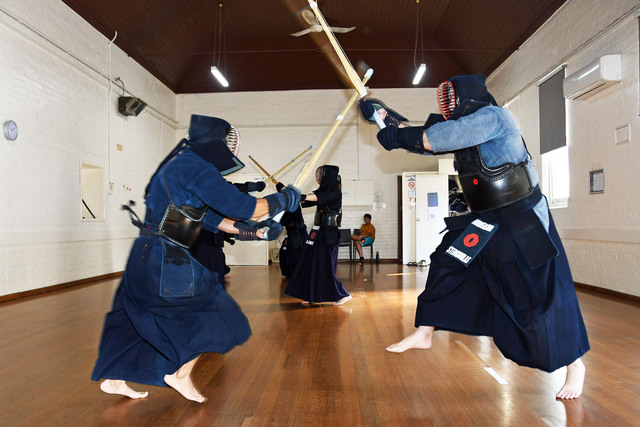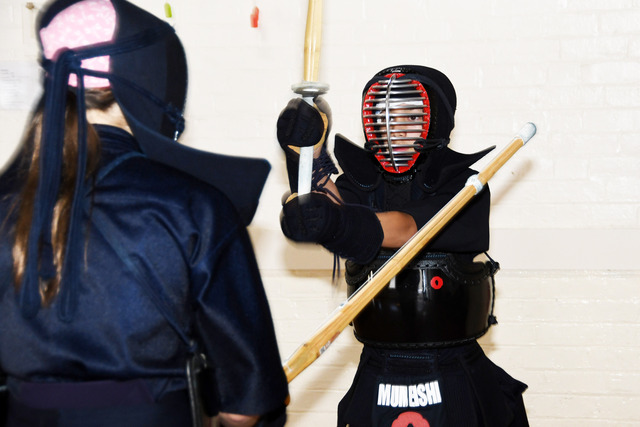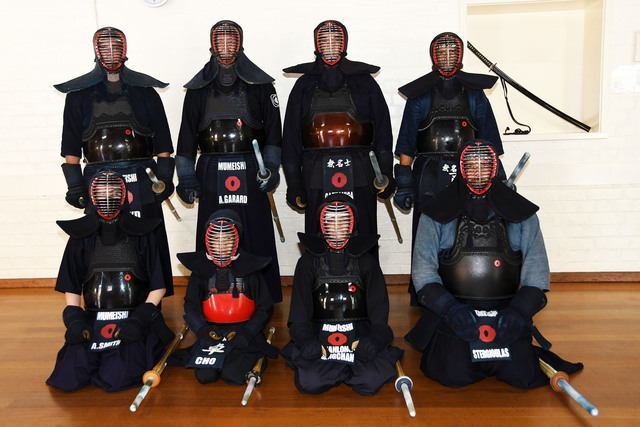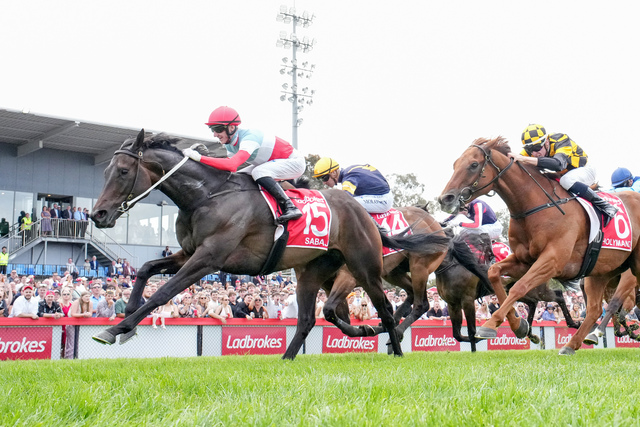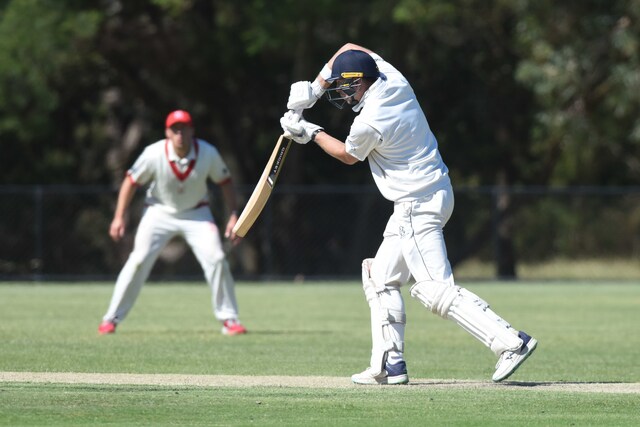Mumeishi Kendo Club is taking a contemporary approach to the oldest of the modern martial arts with a new beginner’s course set to bring the unique style of sword fighting to the community.
Using techniques practiced by Japanese samurai warriors in the middle-ages, Kendo embraces the title that it represents; ‘The Way (Do) of the Sword (Ken).’
Based at the Masonic Hall on High Street in Berwick, the Mumeishi Kendo Club was founded 36 years ago by senior instructor Brent Gazzaniga who made his World Championship debut for the British team in 1976.
Five years later, after winning a gold medal for his fighting spirit at those games, Gazzaniga immigrated to Australia.
He became an Australian citizen and was eligible to represent his new country at the 1985 World Kendo Championships in Paris.
As a competitor and team manager Gazzaniga would represent Australia at three World Championships, before renewing his long association with one of Kendo’s most famous exponents and teachers, the late Kioshi Nakakura Sensei 9th Dan.
Sensei Nakakura encouraged Gazzaniga to teach the ancient martial art in Australia, with the Victorian Kendo Association giving him permission to open a new club in the eastern suburbs of Melbourne.
The Mumeishi Kendo Club in Berwick was born; and 36 years later the dojo is ready to spread the message that the Kendo spirit has been built on.
To mold the mind and body,
To cultivate a vigorous spirit,
And through correct and rigid training:
To strive for improvement in the art of Kendo,
To hold in esteem human courtesy and honor,
To associate with others with sincerity,
And to forever pursue the cultivation of oneself.
This will make one be able:
To love their country and society
To contribute to the development of culture,
And to promote peace and prosperity among all peoples.
It’s a message that Gazzaniga holds close to his heart.
“As society changes some traditional human values are being lost,” Gazzaniga began.
“In the modern world children and young adults get exposed to everything without barriers, but what we do is very traditional; we’re strict in our protocols and teach human values in the dojo.
“It’s based on a martial art, but we believe people can expand those values to their outside world.
“Obviously nobody is going to walk around with a Japanese sword in their lives, so it has to be something else that you take away.
“Kendo is the anvil, if you like, on which people can develop their lives.”
While discipline is an important element of the Kendo journey, Gazzaniga explained that the sport is suitable for both men and women, who compete and train together in a fun and friendly environment.
Gazzaniga is well respected in the sports community, with the Mumeishi Kendo Club in Berwick the breeding ground for some of the most well-instructed athletes in Australia.
Assistant instructor Trent Reeve from Cockatoo was captain of the Australian team at last year’s Kendo World Championships in Italy, and is currently coaching the Victorian team as it prepares for the Australian Championships in April.
“Trent went to Japan as an exchange student, did Kendo for a month there, then found me in Berwick and I’ve been teaching him ever since,” Gazzaniga explained.
“After 20 years at Mumeishi, he’s now 5th Dan black belt and has represented Australia at three world championships.
Gazzaniga said he had many examples of the positive impact that the Kendo dojo in Berwick had on people’s lives.
“I know this for a fact because I have students that often say to me that if they hadn’t walked into the dojo so many years ago, their lives would have been completely different,” he said.
Although still practicing and teaching on a weekly basis, Gazzaniga Sensei now in his late 70’s recently handed the teaching baton to long time Mumeishi member Junji Sakamoto sensei 6th Dan who will lead the club as Principal Instructor into the next phase of its evolution.
BEGINNER’S COURSE
All aspects of Kendo are practiced at the Mumeishi Kendo Club in Berwick, with the dojo set to host the first day of its beginners’ course at the Masonic Hall in Berwick on Sunday 6 April.
All people from age 10 and upwards are invited to contact the club for more details or just turn up on the day.
“This is the first time we have attracted junior levels, so we will have an extra class each week for juniors,” Gazzaniga said.
“We provide everything, people only need to bring their spirit and attention, and all our instructors have working with children accreditation.”
THE SHINAI
Every student of kendo (kendo ka) is taught to consider the shinai as a real sword; one that cuts rather than strikes.
The shinai is made from a single length of bamboo which has been carefully split into four sections. The sections are held together by a leather handle (tsuka), a leather brace and end cap.
All three are joined by a nylon string (tsuru) which runs the length of the sword along the back ridge.
BRIEF HISTORY OF KENDO
As the need grew for samurai to be able to practice their sword fighting skills without the risk of injury from steel blades, they first used wooden swords (boku to) and then bamboo swords (shinai) which are used by kendo practitioners today.
The first kendo armour was developed about 400 years ago and has changed little since then. Modern Kendo is practiced in a full suit of armour including chest and thigh protectors (tare and do), wrist protection (kote) and head and face guard (men).
Prearranged sparring techniques (kata) represent the transition period from kenjutsu to kendo.
As in the old sword schools, kata (prearranged sparring) opponents face each other with either boku to or steel swords (katana).
Opponents face each other and practice pre-arranged techniques and fighting sequences without contact, with practice of this kind keeping modern kendo in touch with its ancient martial origins.
Kendo was briefly banned in Japan by the allied forces following World War II.
Today, however, it is practiced by an estimated 10 million people in more than 50 countries around the world.
The concept of kendo is to discipline the human spirit through the principles of the katana (Japanese sword).
While Kendo has now become a popular sport form, the warrior principles are still very much in evidence.
COURSE DETAILS
Commences: Sunday 6 April
Duration: 8 weeks (16 sessions)
Fee: $160 16+/$100 15 and Under
(Includes loan of shinai (Training Weapon).
For more information, please contact Mumeishi Kendo Club at official@mumeishikendo.com.au or www.mumeishikendo.com.au

